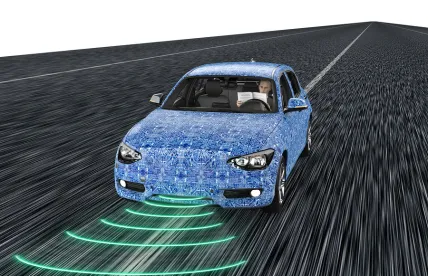It should come as no surprise that vehicles driven largely by a computer, will not only require a lot of data to safely navigate the streets, but these systems will also generate a lot of data over the course of their trip, as well. Not only will this complicate who owns the data and how to protect the data, but it also implicates how this data should be used. To some stakeholders this information will be vital to further optimize driving systems and city-landscapes as our urban centers become more and more congested. To others, implications of privacy and a burden on internet infrastructures means sharing of data should be limited to the greatest extent possible. But, this also means that infrastructures, business models, and concepts of how data is managed and moved will evolve with the autonomous vehicle as well, in an effort to work with these stakeholders and consumers. The transition to these data-heavy driving systems will be gradual, dependent on not only technological advancements, but based on buy-in by regulators and consumers alike. Regardless of the potential use of this data, what is known is that the infrastructure as we have it now, will not be the system we see in five years, let alone 25 years.
The shift from human drivers, to semi-autonomous and fully autonomous systems will mean magnitudes more data to be stored, data to be analyzed, and for some, data to be shared. And this data won’t come simply from the cars themselves, cities are looking to expand smart systems, it means data coming from street lights and traffic lights, bridges and tolls, and the roads themselves. This data being generated won’t be small. In some cases, some of the autonomous vehicles might generate up to four terabytes of data per date (for comparison, the average photo taken by your smartphone is less than 10 megabytes and one terabyte equals approximately 1 million megabytes). Not all this data will be stored on the vehicle. Some might be analyzed in real time, on the vehicle as it looks to navigate the roadways. In other instances, it might be uploaded to a server in another city, state, or country, for further analysis. In other instances, it might be sent to other vehicles or to the infrastructure to assist fellow drivers in real time.
This endless necessity to connect to a system means cities and roadways will need to harden their infrastructure for low-latency wireless communication and data storage systems to comprehend the unfathomable amount of data generated each minute of each day. The Automotive Edge Computing Consortium, or AECC estimates that by 2025, the amount of data generated each month by autonomous vehicles could exceed 10 exabytes per month (this is just under 1,010,000,000,000 megabytes, or about 1,000 times the amount of data generated today).
To some, the roll out of the next generation of cellular towers, known as 5G, will be the forefront of this data-driven automotive industry. This next generation of wireless system will have higher speeds and lower latency than the current industry standard of 4G. Even that system may not be enough to manage the monolithic amount of data uploaded on a daily basis. Even further complicating matters, some systems might require real-time communication with their cloud-based systems to ensure correct positioning and understanding of the environment around them. This becomes further complicated as 5G cellular connections suffer from shorter ranges than 4G systems, and easily encounter interference due to buildings and other structures. This means that urban and suburban settings could see decayed connectivity when infrastructure strain becomes too great.
In an effort to combat infrastructure strain, some system architects are looking at integrating mesh networks and mobile-micro clouds amongst the on-the-road vehicles as a supplement or replacement to their centralized systems. This mesh system will connect the vehicles on the road with each other. This communication between vehicles will enable them to share their own spatial awareness and leverage the computing power amongst each vehicle in the mesh network to process their collective surroundings. This will amplify the computer power of an individual car to that of the mesh network, as well as enable the system to communicate in quicker sequence, with less latency and more real-time data.
As autonomous vehicles integrate into our day-to-day commuting lives, the data they generate will not only help us move to and from our desired location, but tell us more about our daily commutes than we could likely imagine. As this data becomes generated, transmitting, analyzing, and storing this data will remain an ever growing challenge, beyond the struggle of safely navigating our roadways.



 />i
/>i

